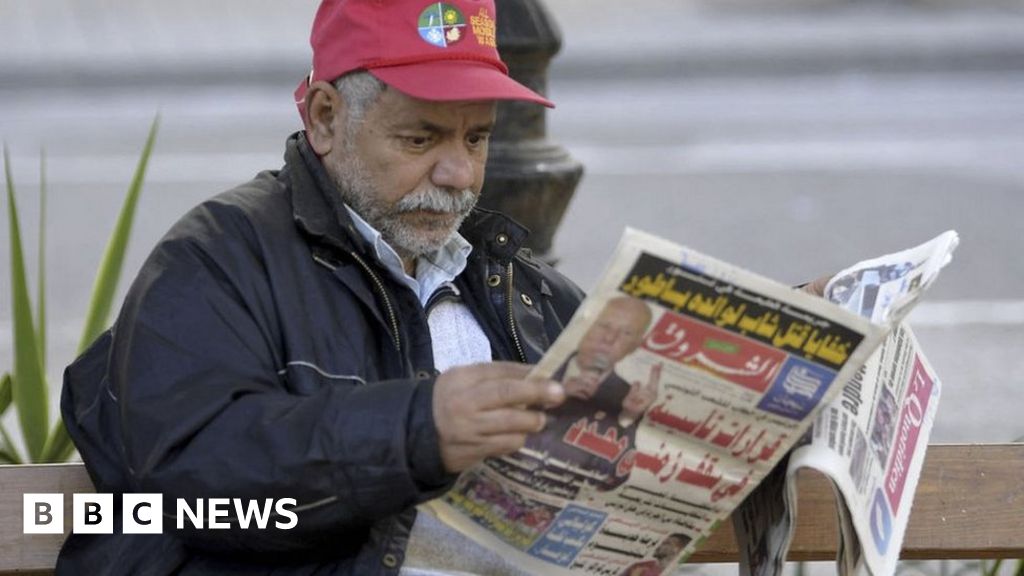Media Landscape in Tunisia: Challenges and Transformations
Rise of Government Control
Since the extraordinary power grab by President Saied in 2021, journalists in Tunisia have faced escalating intimidation from state authorities, according to Freedom House, a U.S.-based nonprofit organization dedicated to global democracy advocacy. The government continues to arrest and prosecute both journalists and political dissidents. A controversial law passed in 2022, which was allegedly designed to address misinformation, has been weaponized to suppress dissenting voices, fostering a pervasive atmosphere of fear within the media community.
Shift in Media Consumption
While traditional television remains an essential facet of the Tunisian media ecosystem, there is a noticeable decline in viewership among younger demographics who are increasingly gravitating towards alternative digital platforms. Despite radio broadcasting showing diversity and resilience, print journalism is struggling significantly. The printed press has seen a dramatic reduction; as of 2022, only 21 newspapers were operational compared to nearly 250 at the start of the revolution in 2011.
Growth of Digital Platforms
What are the main sources of media in Tunisia?
Unlocking Tunisia: Your Ultimate Media Guide
Understanding Media Consumption in Tunisia
Tunisia’s media landscape is diverse and dynamic, shaped by its rich history, cultural influences, and technological advancements. Here are the key components:
- Television: A primary source of information with several local channels and a growing number of satellite broadcasts.
- Radio: Local and national stations provide news, entertainment, and cultural programming.
- Online Platforms: Social media and streaming services are increasingly popular among the youth demographic.
Key Media Platforms in Tunisia
Television Channels
Television remains a significant medium for news and entertainment in Tunisia. The most popular channels include:
| Channel Name | Type | Focus Area |
|---|---|---|
| Wataniya 1 | Public | General News, Culture |
| El Hiwar Ettounsi | Private | Social Issues, Talk Shows |
| Nessma TV | Private | Entertainment, Movies |
Popular Radio Stations
Radio stations play an essential role in daily life, with news coverage and diverse programming:
| Station Name | Type | Content Type |
|---|---|---|
| Radio Tunisienne | Public | News, Culture |
| Mosaïque FM | Private | Current Affairs, Music |
| Shems FM | Private | Entertainment, Talk Radio |
Online Media and Social Networks
The digital landscape is transforming how Tunisians consume media. Key online platforms include:
- Facebook: The most widely used social medium, offering news and community engagement.
- Instagram: Popular among youth for sharing visual content and stories.
- YouTube: A growing platform for both entertainment and informational content.
Cultural Influences Impacting Media
The media in Tunisia is influenced by various cultural and historical factors:
- Historical Context: Post-revolution media reflects the aspiration for freedom and democracy.
- Language: Media content is primarily in Arabic and French, catering to diverse audiences.
- Religious Factors: Islamic values and perspectives frequently shape the narrative in various media forms.
Benefits of Navigating Tunisia’s Media Landscape
Understanding Tunisia’s media ecosystem comes with multiple advantages:
- Access to Diverse Perspectives: Engaging with various channels highlights multiple viewpoints.
- Informed Citizenship: Staying current with news and events fosters responsible participation in society.
- Cultural Appreciation: Engaging with local media aids in understanding Tunisian culture and traditions.
Practical Tips for Engaging with Tunisian Media
- Follow Local Influencers: Social media influencers can provide insights into everyday life.
- Engage with Content: Commenting or sharing news stories can create dialogue and community.
- Use VPNs When Necessary: Accessing international content might require VPN services for geo-restricted content.
Case Studies: Media Outlets in Action
Mosaïque FM’s Approach to News Reporting
This station is known for its real-time news coverage and social engagement. Its ability to respond quickly to current events solidifies its position as a credible source.
Wataniya 1’s Cultural Programming
Wataniya 1 frequently showcases Tunisian arts, challenging stereotypes and fostering national pride through cultural programming.
First-Hand Experiences: Engaging with Tunisia Media
Here are statements from individuals who have navigated the media landscape in Tunisia:
- Ahmed, 29: “Listening to local radio provides a sense of community and keeps me informed about national issues.”
- Sara, 24: “I enjoy using Instagram to find local events and connect with creative people in Tunisia.”
- Fatima, 35: “Watching historical dramas on television has deepened my understanding of our culture.”
Conclusion: Unlocking Tunisia Through Media
As you navigate the vibrant media landscape of Tunisia, remember that each platform offers unique insights and experiences. Engaging with local media not only fosters understanding but also amplifies the voices of the Tunisian people.
Contrastingly, digital media platforms have experienced robust growth. Although online discussions flourish on various forums and social networks, many users choose self-censorship when engaging with sensitive subjects related to government policies or societal issues. Investigative news outlet Nawaat stands out as the most followed platform on social media with over 1.5 million followers; it is closely followed by Tunisie Numerique and Babnet.
Internet Penetration Statistics
As reported by Datareportal.com, by February 2024, Tunisia boasted approximately 9.9 million internet users—representing about 79% of its total population—indicating that digital engagement continues to rise amidst ongoing obstacles for traditional journalism.
Conclusion
The contemporary media environment in Tunisia reflects significant transformations shaped by governmental pressure while simultaneously adapting through digital proliferation. The pressing challenges faced by journalists today compel them towards innovation as they navigate an increasingly complex landscape marked by both growth opportunities and profound risks.
